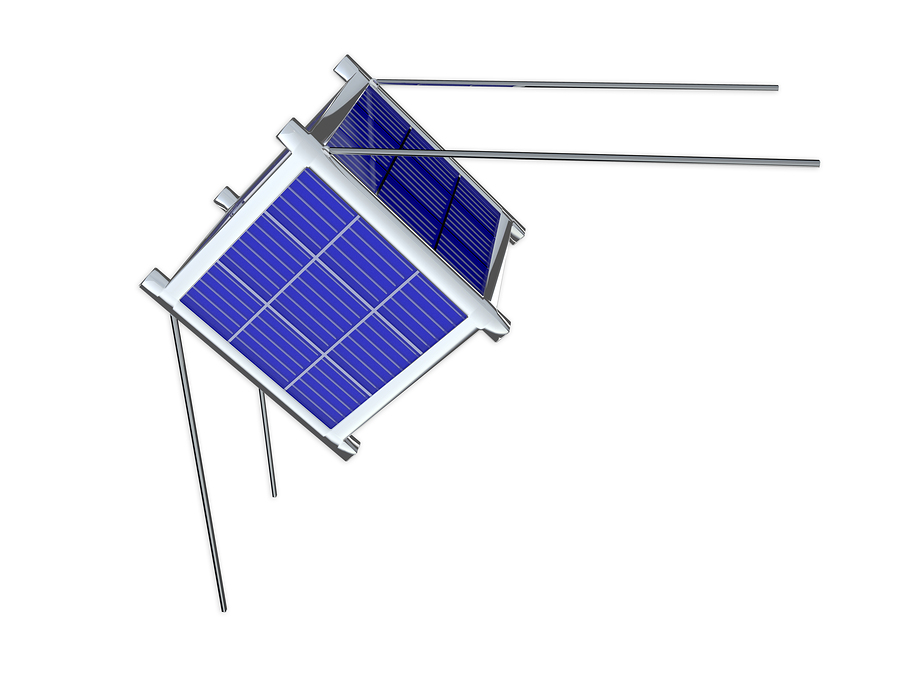Big, small, micro, nano, pico, femto… the family of satellites never ceases to amaze us. Originally designed by the academic world, the nanosatellite has seen its fame grow with the explosion of microelectronics and the arrival of new players. Here is a brief tour of its peculiarities, and a history of its launches and its missions.
Size that makes it talked about
Designed by engineering students using the Agile incremental method (no specifically defined purpose, constant innovations) and from existing standard components, the nanosatellite is relatively inexpensive and light (1 to 10 kg). Due to its small size (a few centimetres), the Cubesat (still called “student satellite”) is not as powerful as its big brother, the microsatellite (10 to 100 kg), with intermittent and low speed communication (little energy available) and low resolution images (small size of instruments on board). However, the Cubesat can rely on innovative miniaturized components, coming especially from mobile telephony. With these benefits, the nanosatellite is now interesting not only to universities that see it as a great educational tool, but also to aerospace agencies and SMEs that can quickly set up inexpensive missions.
Winning return for the nanosatellite
On December 12, 1961, the first nanosatellite was sent into space. It weighed 5 kg and operated for 50 days. It was almost 40 years before two Californian professors (Jordi Puig-Suari and Bob Twiggs) gave a second wind to nanosatellites, thanks to a cubical assembly of 10 cm per side, the CubeSat. In 2001, Canada established its Canadian Advanced Nanospace eXperiment (CanX) before sending, in 2007, its CanX-6 (6.5kg) to detect and monitor ships. In June 2003 it was Russia’s turn to launch its first Cubesat into orbit. Almost ten years later, five CubeSats were put into orbit from the International Space Station (ISS). More recently, in May 2016, NASA launched its first CubeSat for the MinXSS scientific mission. Finally, in February 2017 104 miniature satellites were launched from a single rocket by Isro, the Indian space agency.
Diverse and varied missions
The nanosatellite firstly represents an ideal platform for technological demonstration in assessing risks for future missions and is a formidable tool for education and training. Then this renewed interest in nanosatellites is explained by the wide variety of fields that can be explored during the missions – biology, astronomy, space meteorology, atmosphere, environment… As an example, exploration of the brightest stars is made possible thanks to the BRITE (BRIght Target Explorer) Constellation of nanosatellites. Meanwhile the PicSat nanosatellite, launched into orbit in January 2018, will enable observation of the Beta Pictoris exoplanet to study its density and deduce its composition. Finally, more practically, nanosatellites will be able to play the role of meteorological stations and accurately track the course of a hurricane.
The enthusiasm of both private and public players proves that there is a real market for the nanosatellite, whose potential is estimated to be more than $800 million within a few years. However, there are challenges that still need to be overcome such as propulsion of these small spacecraft and the need to be detected by radar to avoid collisions with Soyuz quickly.
In conclusion, the challenge of propulsion and detection by radar needs to be taken up to reach its market potential of $1 billion within a few years.
